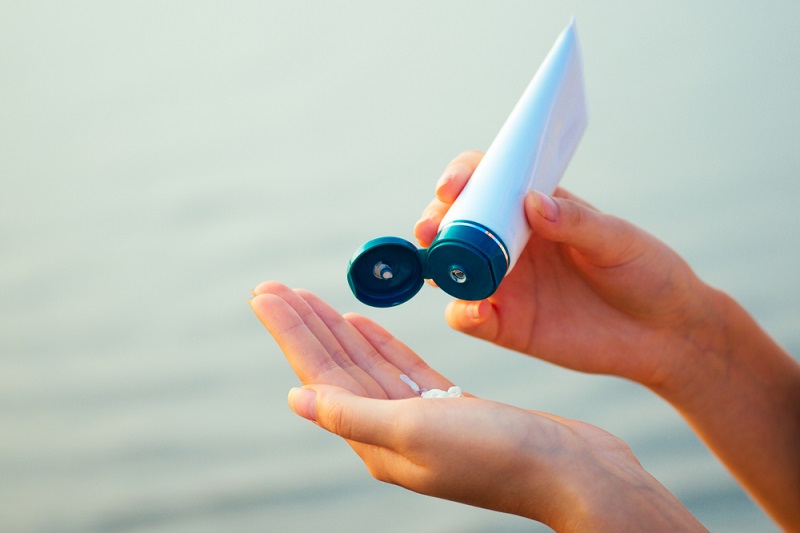Your Sunscreen Isn't Protecting You As Much As You Think: Here's Why

With summer in full swing, many people are dutifully applying their sunscreen before heading outside. But your sunscreen may not be protecting you as much as you think, a new study suggests.
This isn't due to any fault of the product, though, but rather to the way people apply sunscreen — consumers tend not to apply sunscreen in a thick enough layer to get the full benefits, the researchers say.
The study, published July 24 in the journal Acta Dermato-Venereology, found that, when sunscreen with a sun-protection factor (SPF) of 50 is applied in a "typical" way (that is, in a relatively thin layer), it provides at best only 40 percent of the expected protection.
"There is no dispute that sunscreen provides important protection against the cancer-causing impact of the sun's ultraviolet rays," lead study author Antony Young, a professor at St. John's Institute of Dermatology at King's College London in the United Kingdom, said in a statement. "However, what this research shows is that the way sunscreen is applied plays an important role in determining how effective it is," Young said. [5 Things You Didn't Know About Sunscreen]
It's known that applying too little sunscreen can result in sunburns and skin damage. But the new study is one of the first to assess how much DNA damage occurs in the skin when people apply sunscreen in a "typical" way — that is, when they apply less than the amount used when manufacturers test sunscreens to determine their SPF rating. That amount, according to the study, is 2 milligrams per centimeter squared (mg/cm^2).
The study involved 16 people with fair skin who were exposed to ultraviolet radiation (UVR) to simulate sunlight. (Just a small part of the participants' skin was exposed.) Sunscreen was applied to participants' skin at various thicknesses, ranging from 0.75 mg/cm^2 (considered "typical" use), up to the recommended 2 mg/cm^2. Some participants were exposed to the UVR for five consecutive days, to mimic typical vacation conditions. The researchers also varied the dose of UVR exposure, ranging from low to high intensity.
At the end of the experiment, the researchers took biopsies of the skin that was exposed to the UVR. The biopsies showed that, after repeated UVR exposure, there was considerable DNA damage on areas that received no sun protection, even though the dose of UVR used on these areas was very low. (For ethical reasons, the dose of radiation used on unprotected skin was a minimal dose that would not induce sunburn.)
Get the world’s most fascinating discoveries delivered straight to your inbox.
In fact, just one day's worth of low-dose UVR exposure to an area without sunscreen resulted in more DNA damage than five days' worth of high-dose UVR exposure to an area with sunscreen applied at recommended thickness, the researchers said.
DNA damage was somewhat reduced when sunscreen was applied at a thickness of 0.75 mg/cm^2, and it was considerably reduced when sunscreen was applied at a thickness of 2mg/cm^2.
Overall, the findings "demonstrate that public health messages must stress better sunscreen application to get maximal benefit," the researchers wrote.
To apply the right thickness of sunscreen, people need to use about 35 milliliters (ml) — or 1.2 ounces — of sunscreen for their whole body, according to a 2002 paper on the topic published in JAMA Dermatology. When the size of each body part is considered, people should apply a little more than half a teaspoon (3 ml) to their head and neck; a little more than half a teaspoon to each arm; a little more than a teaspoon (6 ml) to each leg and a little more than a teaspoon each to their chest and back, the JAMA Dermatology paper said.
The researchers also recommend that people use a higher SPF than they think is necessary, given that consumers tend to apply too little sunscreen.
"In theory, an SPF of 15 should be sufficient [to protect people's skin], but we know that in real-world situations, we need the additional protection offered by a higher SPF" of 30 or more, Nina Goad, of the British Association of Dermatologists, said in the statement. (SPF is a measure of how well a sunscreen protects against UVB rays, which cause sunburn.)
The findings also show that people shouldn't rely on sunscreen alone for sun protection, and that "we should also use clothing and shade," said Goad, who was not involved in the study.
Original article on Live Science.

Rachael is a Live Science contributor, and was a former channel editor and senior writer for Live Science between 2010 and 2022. She has a master's degree in journalism from New York University's Science, Health and Environmental Reporting Program. She also holds a B.S. in molecular biology and an M.S. in biology from the University of California, San Diego. Her work has appeared in Scienceline, The Washington Post and Scientific American.
